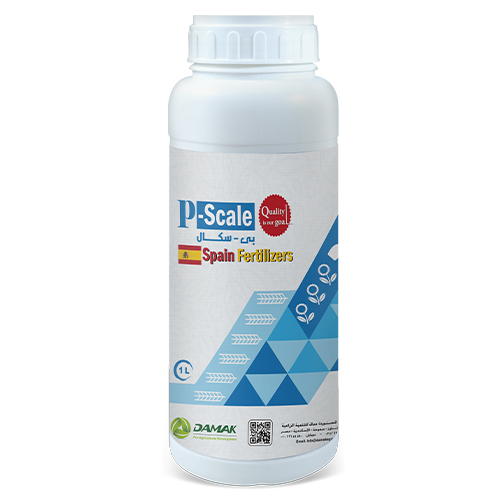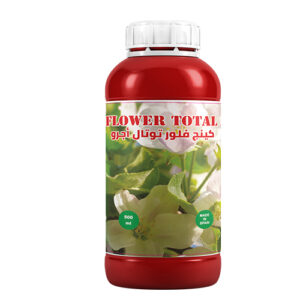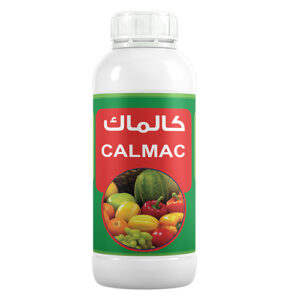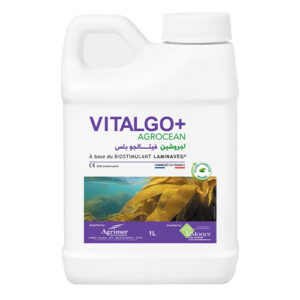Definition:
It is a compound containing potassium and phosphite ion, which is completely and quickly absorbed through the leaves and roots and is also used to strengthen the natural immunity of the plant against fungal diseases and physiological stress and is also used in the stages of root system formation, flowering and fruit ripening. In addition, it improves the absorption of nutrients.
Characteristics and features:
- It is specially used to prevent and correct the symptoms of potassium deficiency, as it is associated with the phosphate molecule, which is characterized by its rapid absorption inside the plant.
- Helps the plant to withstand all kinds of stress, as it increases flowering and fruit set, reduces falling, works on early ripening, improves the qualities of fruits, from color and taste, and increases the storage period of the crop.
- The presence of potassium element works on protein synthesis, opening and closing stomata, maintaining the rigidity of cells, increasing the size, color and hardness of fruits.
- A systemic compound where it is absorbed by the roots and leaves, where the phosphite moves in the plant inside the cells of xylem and phloem with ease, and there is no inhibition of it in the soil and it is easy for the plant at any time.
- It activates the natural immune system of the plant by promoting the biosynthesis of phytoalexins and other metabolic processes (such as salicylic acid) produced by plants to resist fungal and bacterial pathogens.
- Phosphite works in the control of some diseases, especially those belonging to the group of oomycetes fungi, such as Pythium and Phytophthora.
- The phosphate molecule works to inhibit a number of root rot fungi such as (Fusarium – Rhizoctonia – Pythium), and also works to inhibit many fruit rot fungi such as (Botrytis – Aspergillus – Rhizopus).
The most important uses of phosphite on the plant
- In vegetable crops during the period of root formation and before flowering, it is used as a fungicide at all stages of growth against many fungal and bacterial diseases before the appearance of pathological symptoms.
- In fruit orchards it is used in the periods of vegetative growth in spring and
- In grain and feed crops in the first stages of growth in order to strengthen the root
Mixability:
It cannot be mixed with copper compounds or their derivatives, it is not mixed with mineral oils, as well as compounds containing oils or emulsions, and it is not mixed with foliar fertilizers with high nitrogen content, and it is preferable to conduct a mixing experiment before use.
Recommendations and usage rates:
| Crop | Application rate | Treatment |
| Fruit trees
(citrus – apple – mango) |
250 – 300 cm / 100 L
of water |
2 – 3 treatments starting from flowering and fruit set with an interval of 15 days between
each treatment. |
| Grape | 250 – 300 cm / 100 L
of water |
3 – 4 treatments every 15 days starting before flowering until the beginning of
coloring. |
| Vegetables
(tomato – pepper– artichoke) |
1 – 1.5 L / Acre | During vegetative growth and the
beginning of flowering and fruit set. |
| Potato | 1 – 1.5 L / Acre | During vegetative growth until tuber bulking
stage. |
| Peanut | 1 L / Acre | At the age of 45 – 50 days or pegging stage, the treatment can be repeated
after 10 days. |
| Seed crops | 1 – 1.5 L / Acre | It is used at the beginning of branching
until the heading stage and until the beginning of grain formation. |
| Strawberry | 1.25 – 1.5 L / Acre | 2 – 4 treatments every 15 days beginning
before flowering. |
| Olive trees | 200 – 300 cm / 100 L
of water |
At the beginning of flowering and fruit
set. |
Ground addition (drip Irrigation)
| Crop | Application rate | Treatment |
| Fruit trees (citrus – apple – mango)
Olive trees |
2.5 – 4 L / Acre | The treatment takes place in spring and autumn |
| Vegetables – Strawberry | 2.5 – 4 L / Acre | The treatment is repeated every 15 – 30 days after the first treatment |
| Field crops | 2.5 L / Acre | The treatment is repeated every 15 – 30 days after the first treatment |





